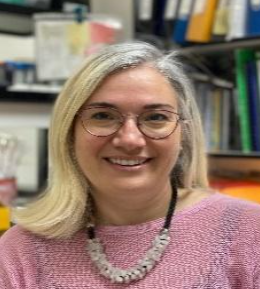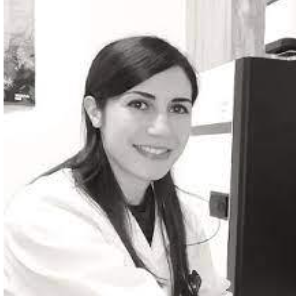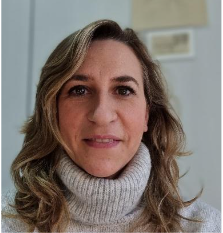WEBINAR SERIES:
Oxidative Stress: Biochemical and Pharmacological aspects
15:00-17:00 (CEST)
June 12, 2023,
15:00-17:00 (CEST)
Participation is free of charge but registration is compulsory at www.antiox.it
Neural injury leads to inflammation and activation of microglia that in turn may participate in progression of neurodegeneration. The mechanisms involved in changing microglial activity from beneficial to chronic detrimental neuroinflammation are not known but reactive oxygen species (ROS) may be involved. We have addressed the role of NRF2, master regulator of antioxidant cell homeostasis, in modulation of microglial dynamics in neurodegenerative progression employing Parkinson’s and Alzheimer’s disease (PD and AD) mice models. In fact, NRF2-deficient mice exhibited more microgliosis as determined by an increase in messenger RNA and protein levels for F4/80. Accordingly, other inflammation markers characteristic of classical microglial activation, COX-2, iNOS, IL-6, and TNF-α were also increased and, at the same time, anti-inflammatory markers attributable to alternative microglial activation, such as FIZZ-1, YM-1, Arginase-1, and IL-4 were decreased. The immunomodulatory molecule dimethyl fumarate (DMF), a drug already used for the treatment of multiple sclerosis whose main target is accepted to be NRF2, was tested in our AD preclinical model. Daily oral gavage of DMF during six weeks reduced inflammatory markers and improved cognition and motor complications in the AD mice compared with the vehicle-treated animals. Taken together we have demonstrated the relevance of normal homeostatic responses that decline with ageing, such as NRF2 activity, in the protection against inflammatory and oxidative stress and providing a new strategy to fight neuroinflammation through redox control of the brain.

Ana I Rojo studied Biochemistry at the Autonomous University of Madrid (Diploma in 2001), holds a PhD in Biochemistry (graduated in 2006), and since 2017 is professor in Biochemistry at the Autonomous University of Madrid (Faculty of Medicine). As professor, she has participated in multiple teaching activities for the degrees of Biochemistry, Medicine, and Nursing, with special focus on research training. She has been holder of different competitive fellowships and contracts. Her professional career is focused on the study of the molecular basis of neurodegenerative diseases and in the search for novel brain protective therapies with a special focus on redox biology and NRF2 transcription factor. Nowadays, she is exploring the role of NRF2 in the pathogenesis of Alzheimer’s disease and lateral amyotrophic sclerosis as principal investigator. She has published over 50 primary and review articles and participated in more than 30 congress.
Mutations in the X-linked genes methyl-CpG–binding protein 2 (MECP2) and cyclin-dependent kinase-like 5 (CDKL5) are associated with Rett syndrome (RTT) and CDKL5 deficiency disorder (CDD), respectively, predominantly affecting females and characterized by intellectual disability, and seizures, together with scoliosis, breathing disturbances, GI dysfunctions, and sleep abnormalities. Other common denominators of RTT and CDD syndromes are represented by perturbed cholesterol homeostasis, increased cellular and systemic oxidative stress (OS), mitochondrial function abnormalities, aberrant microglial activation, and a subclinical inflammation. All these aspects converge in a vicious circle, which leads to organ/tissue damages, known as ‘OxInflammation’.
In light of this, we investigated the role of Nrf2, given its function as master regulator of cellular responses to oxidative stress and its involvement in inflammatory pathways, in primary ex-vivo human cellular models of both CDD and RTT, upon pro-oxidant and/or pro-inflammatory challenges.
Nrf2 system showed an impaired response in both disorders, but with some divergent features.
In MeCP2-deficient primary fibroblasts, we noticed a slight increase of Nrf2 nuclear localization in basal condition, as compared to cells derived from healthy subjects (CTR). While fibroblasts isolated from CDD patients showed lower Nrf2 basal levels in the nucleus, as compared to CTR, and the inability to induce a proper defensive response with a significantly reduced nuclear Nrf2 translocation after oxidative stimulus.
Although the modulation of Nrf2 in the two pathologies seems to be different, in both conditions its activations is impaired confirming the inability of cells derived from CDD and RTT patients to counteract the altered redox homeostasis.
The molecular basis of the discrepancy in the Nrf2 behaviour is unknown and requires further investigation, especially in the light of the possible development of new therapeutic strategies for these devastating syndromes still without a cure.

Valeria Cordone graduated in Biotechnologies at the University of L’Aquila, Italy (in 2015), and achieved the Ph.D. in Cellular and Molecular Biotechnologies (in 2019). Since 2019 she is a post-doc fellow at the University of Ferrara (under the Supervision of Prof. Giuseppe Valacchi). During the Ph.D. course, she spent 5 months as visiting scholar, at the Plants for Human Health Institute (North Carolina State University, Kannapolis, NC). While in 2020, she won a prestigious Post Doctoral Fellowship, founded by Umberto Veronesi Foundation and ProRETT Onlus, presenting a project entitled ‘Role of inflammasome in Rett Syndrome’. Her research mainly focuses on investigating molecular and cellular mechanisms related to the synergistic condition of oxidative stress and chronic subclinical inflammation (“OxInflammation”), involved in the pathogenesis of neurodevelopmental disorders, like Rett Syndrome. These studies involve the analysis of pathways upstream and downstream of the inflammasome activation, as well as the interaction between Nrf2 and NF-κB, in mediating the OxInflammatory damage and participating in the multi-systemic alterations characterizing the aforementioned pathology. She has published 19 peer-reviewed international papers, participated in several national and international congresses, received a Travel Award and a Young Investigator Award from the Society for Free Radical Research-Europe.
TAU protein aggregation is the main characteristic of neurodegenerative diseases known as tauopathies. Low-grade chronic inflammation is also another hallmark that indicates crosstalk between damaged neurons and glial cells. The chemokine fractalkine (CX3CL1) modulates microglial responses in neurodegenerative diseases, including tauopathies, but the mechanistic processes and their relevance in human brain pathologies is not yet known. We have demonstrated that neurons overexpressing TAUP301L release CX3CL1, which activates the transcription factor NRF2 signalling to limit over-activation in microglial cells in vitro and in vivo. However, the connection between CX3CL1/CX3CR1 and NRF2 system and its functional implications in microglia are poorly described. We have observed that in primary microglia from Cx3cr1-/- mice the mRNA levels of Nrf2 and its related genes were significantly decreased, establishing a direct linking between both systems. CX3CR1-deficient microglia showed impaired cell migration and deficiency of phagocytosis, as previously described for NRF2-deficient microglia, reinforcing the idea of the relevance of the CX3CL1/CX3CR1 axis in these events. The importance of these findings was evident in a tauopathy mouse model where the effects of sulforaphane (SFN), an NRF2 inducer, were examined on neuroinflammation in Cx3cr1+/+ and Cx3cr1-/- mice. Interestingly, the treatment with SFN was able to modulate astrogliosis but failed to reduce microgliosis in Cx3cr1-/- mice. These findings suggest an essential role of the CX3CR1/NRF2 axis in microglial function and in tauopathies. Therefore, polymorphisms with loss of function in CX3CR1 or NRF2 have to be considered for the development of therapeutic strategies.

Prof. Lastres-Becker has more than 20 years of experience in the field of neurodegenerative diseases. The study of neurodegenerative diseases has been from the beginning of her doctoral thesis and until now, the guiding thread that has driven her entire scientific career. Her work is focused on the molecular bases of the neurodegeneration related to proteinopathy, neuroinflammation and oxidative stress. She is the head of the laboratory of “Parkinson, ALS and tauopathies: new insights”. The research group headed by Prof. Lastres-Becker has multiple affiliations as part of Hospital La Paz Institute for Health Research-IdiPAZ, UAM-CSIC’s “Alberto Sols” Biomedical Research Institute (IIBM) and Universidad Autónoma de Madrid-UAM’s School of Medicine. Besides, she is also an external collaborator of Spanish National Institute of Health’s Networked Biomedical Research Center on Neurodegeneration (CIBERNED). As Associate Professor in Biochemistry, where she teaches courses on the BSc in Biochemistry, BSc in Human and dietary nutrition, and BSc in Biomedical Engineering. In addition, she is also involved in teaching various MSc (Molecular Biomedicine, Biomolecules & cell dynamics and Neuroscience) at both UAM’s Schools of Medicine and Sciences.
Her wide research background covers most prevalent neurodegenerative diseases, looking for reliable markers of progression that can also serve as drug targets for modulating neurodegeneration. The research projects she develops have a multidisciplinary approach that combines basic and translational research, using cell culture techniques, murine models (transgenic mice and adeno-associated viral vectors) and postmortem samples from patients with AD, PD and ALS. She is engaged in the development of advanced biological markers, new drugs and appropriate technology to establishing treatments for those diseases. Prof Lastres-Becker’s group stands out by their use of the murine models that best resemble neurodegenerative diseases to date. Furthermore, the therapeutic targets found in these models are validated in post mortem patient samples, which gives robustness and translatability to the results.
COST (European Cooperation in Science and Technology) is a funding agency for research and innovation networks. Our Actions help connect research initiatives across Europe and enable scientists to grow their ideas by sharing them with their peers. This boosts their research, career and innovation.
Grant Holder: Universidad Autónoma de Madrid
Start of Action: 19 October, 2021
End of Action: 18 October, 2025
CSO approval date: 25 May 2021
Action email: info@benbedphar.org
© 2022 BenBedPhar | Design by Tuinbit Group